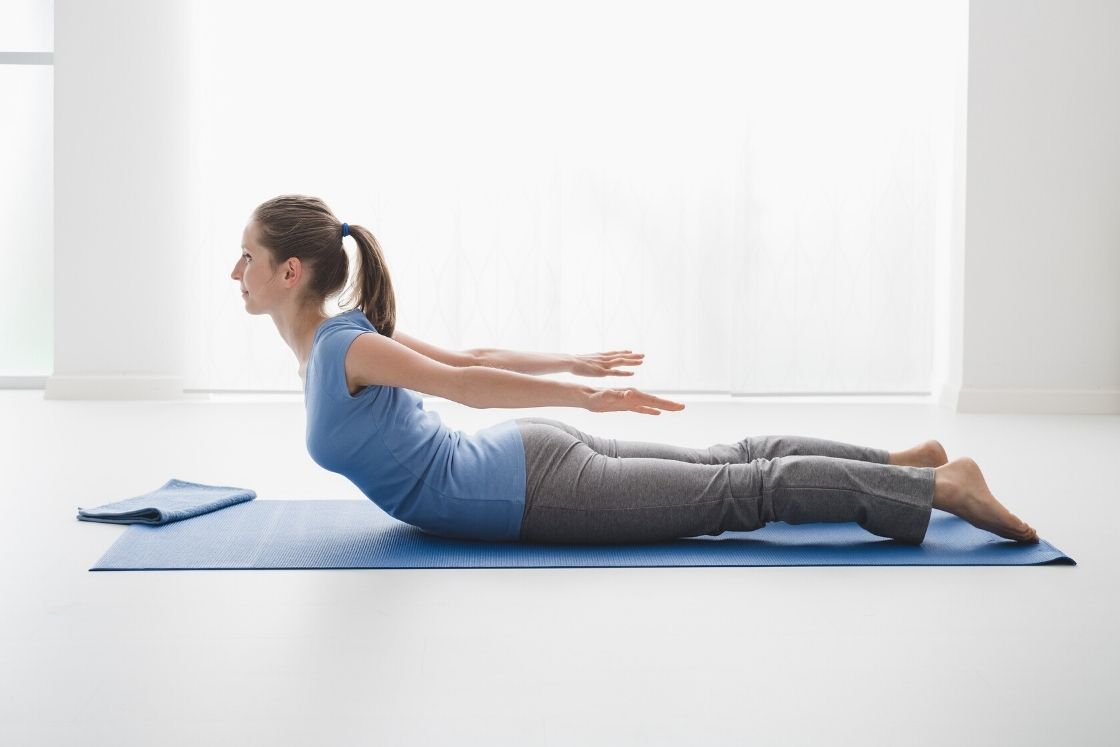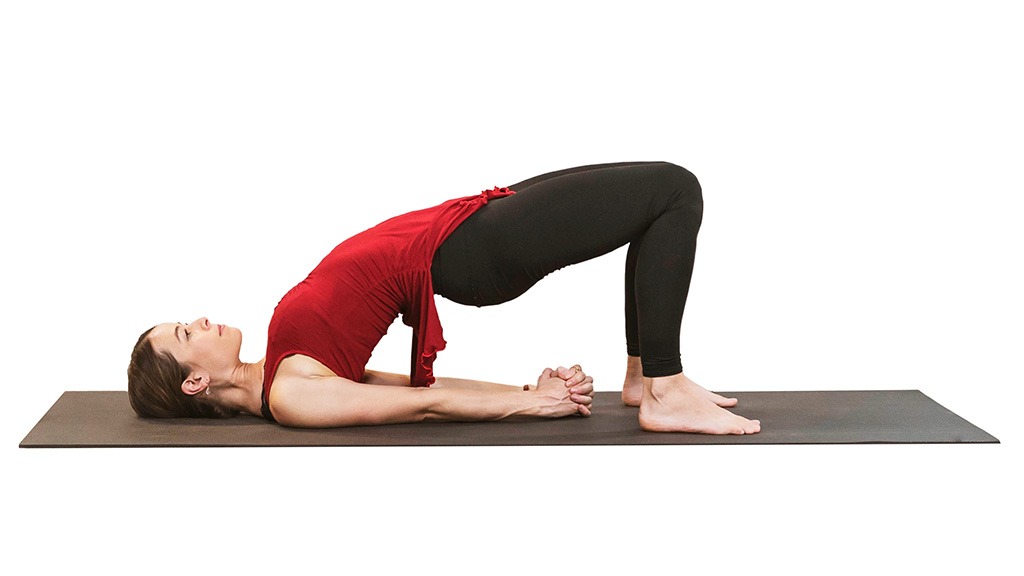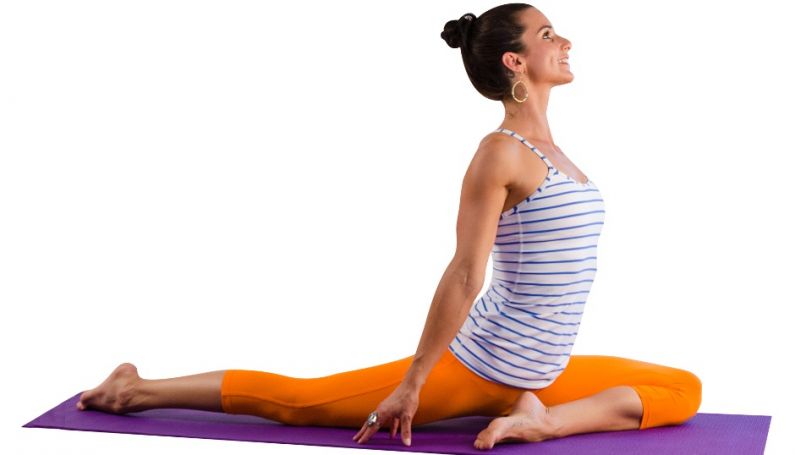The sciatic nerve is the longest and widest nerve in the body. It starts in the lower back, near the spine, and travels through each buttock before terminating in the back of each leg.
It can be an extremely painful experience to deal with the discomfort. Standing up seems unfeasible, and sitting down only makes the pain worse.
Usually starting from one side of the lower back, the symptoms spread to the back, legs, and, in most cases, the feet.
Some people report a searing pain in one area of the leg or rear while feeling numb in the other regions. Often, the aching leg may feel cold and weak.
Weakness in the lower back or leg, numb thighs, burning or tingling sensation in the legs, rear and feet, but as well losing the control of bladder or bowel are also part of the symptoms connected with sciatica pain.
But also there are conditions that affect the sciatic nerve and causing pain like: spinal disorder for example spondylitis, damaged or ruptured disc, spinal stenosis degenerative disc diseases and any other lower back injury.
Someone suffers more someone less, but if you leave it untreated the symptoms can get worse with time.
How does the pain stars?
Usually it goes slowly, but can worsen during the night, or when laughing, sneezing or coughing, when sitting, standing or walking for long durations, and forget bending backward and forward.
For relieving sciatica pain there are lots of medications and therapies but, even doctors recommend doing some exercises like stretching.
Yoga is one of those specialized effective technique.
2009 – The Alternative Therapies in Health and Medicine published a study in which- People with moderate to serious back pain who alternated between yoga sessions and regular care (including pain-alleviating medication) reported a significantly greater reduction in the intensity and frequency of pain after yoga than after regular care.
Very important to mention: Always consult your physician before doing the exercises.
Couple Yoga stretches for relieving sciatic pain:
Dandasana – Staff Pose
This siting position for yoga is the basic, it will stretch your legs, flex lower back, promote blood circulation in the painful areas and release from sciatic nerve making it room to breathe.
- Take your mat and sit on it with the legs outstretched in front of you and your hands at your sides with your palms touching the floor.
- Flex your feet forward while you stretching it.
- Pull your back up, and stretch your spine, lengthening it.
- Maintain the position for 15-30 seconds and take deep breaths.
- Relax and repeat for 5 to 10 rimes.
Locust Pose (Shalabhasana)
With this exercise you would be able to strengthen your lower back and to improve the blood circulation to your lower hips.
Blood circulation can be one of the causing reasons for sciatica pain. Due to poor circulations is pressure that builds up for number reasons can appear sciatica pain.
Improved circulation will promote healing and provides relieving of the pain.
- Lie face down and place your arms at your sides with your palms outwards. Your toes should point downward, touching each other, while the heels should be apart.
- With your chin touch the ground, your neck is elongated and your pubic bone is pushed down.
- Take a deep breath and raise your legs, arms and chest simultaneously. Lift the knees off the ground; put the shoulders close together and straight up your neck. Once you’ve lifted yourself up, exhale and stay in that position for 5 to 8 seconds. Stretch your back gently.
- While in this position, inhale and spread your legs apart, then exhale and bring them back in. Repeat this exercise 5 times. This is an addition to the traditional locust pose, which is especially effective in reducing sciatic pain.
- Gently bring your body back down to the floor, fold your hands under your forehead and rest, and face down, for 1 minute.
- Repeat the exercise 5 to 10 times.
Supported Bridge Pose (Setu Bandhasana)
This exercise is perfect for the major buttock and excellent choice for sciatic pain.
- Lie down on your back, bent your knees and plant your feet firmly on the ground.
- Draw in your heels close to your buttocks and place your arms, palms down, at your sides.
- Exert pressure on the floor with your feet and palms for support, take a deep breath and gently lift your hips off the ground. Consciously push your tailbone up toward your pubic bone. Your shoulders, neck and head should stay on the floor, your lower back should be elongated, and your knees should be away from each other.
- Maintain this position for 10 to 15 seconds, exhale and come back down.
- Repeat this exercise 5 to 10 times.
Pigeon Pose (Kapotasana)
The sciatic pain can be also caused by irritation and pressure on the sciatc nerve and pushing it against the tendons located beneath it.
- Lift yourself up so you are standing on your palms and knees.
- Starting with your right leg, bring your right knee forward so its placed behind your right wrist, and your right foot is in front of your left wrist. Your chin should be at a 45-degree angle at this point.
- Slide your left leg back, and stretch your torso forward.
- Maintain this position for 5 seconds, inhale, and stretch your hands out in front of you, bringing your forehead to the ground in a sleeping position.
- Take deep breaths and maintain this position for 15 to 30 seconds. Make sure you are consciously pushing your left thigh toward the ground and pushing your stomach slightly in for balance.
- Lift your head up, pull your hands back, tuck your left toes in and pull your right leg back.
- Repeat these steps with your left leg.
- Repeat this exercise 5 to 10 times, alternating between your right and left legs.
Reclining Big Toe Pose (Supta Padangusthasana)
This exercise is another great choice to relieve sciatic pain and promote better blood circulation in the area below the torso.
- Lie flat on your back, bend your right knee and bring it in toward your chest.
- Grab an elastic strap, secure it around the ball of your foot and lift your right leg toward the ceiling.
- While keeping your foot open and flexed stretch your leg and your buttocks pressed to the ground.
- Breathe deeply and maintain this position for 10 seconds.
- Lower your right knee back toward your chest before placing your right leg back on the ground.
- Repeat the exercise with the left leg. Alternate between the legs 5 to 10 times.
Spinal Twisting Pose (Ardha Matsyendrasana)
This exercise serves to release tension and pain in the back, and to promote circulation
- Sit on the mat, stretch your legs and put the arms by your sides.
- Bend your right knee, position your right foot outside of your left thigh and hold your right toe with your left hand.
- Place your right hand behind your back, and put your upper body to the right, take deep breaths.
- Maintain this position for 30 to 60 seconds, reverse the legs and repeat the exercise.

:max_bytes(150000):strip_icc()/Verywell-7-3567193-StaffPose-685-598b669ab501e80012e55b4d.jpg)




